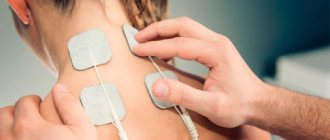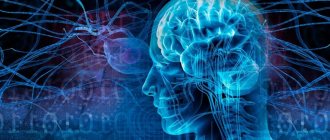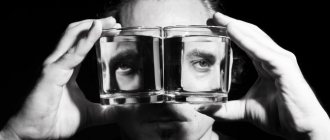Why does a person faint and what is this condition? The brain cannot function normally without a constant flow of blood and nutrients. A sudden disruption of this process causes severe oxygen starvation of brain tissue. The result is a short-term loss of consciousness - usually it lasts a few seconds. The repetition of these cases indicates cardiac and neurological problems in the body, and the causes of fainting are varied. There is no need to delay their diagnosis. Not only fainting, but also pre-fainting conditions should alert you and lead you to a qualified specialist. Now you can undergo a consultation and a set of preparatory examinations when registering for a course of enhanced external counterpulsation or shock wave therapy of the heart absolutely free of charge!
Promotion
Just until the end of autumn, undergo a free consultation and a set of preparatory examinations* when registering for a course of enhanced external counterpulsation or shock wave therapy of the heart.**
Send a request
* Check the details of the Promotion by phone. **Has contraindications; consultation with a doctor is required.
Enhanced external counterpulsation (EECP) Cardiac shock wave therapy (SWTS)
Hurry up to apply, the promotion period is limited.
Symptoms of loss of consciousness
Fainting and loss of consciousness - what's the difference? There is no difference, since fainting is a loss of consciousness for a short time (usually up to 1 minute). The main precursor can be called a pre-fainting state. And speaking about the symptoms of loss of consciousness, most often they mean the symptoms of a pre-fainting state:
- a feeling of lightheadedness and nausea sets in;
- the heart begins to beat quickly;
- circles and “spots” appear before the eyes;
- vision loses clarity;
- a strong pounding appears in the temples;
- cold sweat is produced profusely;
- there is a feeling of imminent fall.
It is at this moment that emergency measures must be taken to prevent loss of consciousness. Timely provision of first aid is also extremely important.
However, fainting can occur quite suddenly, without this “warning”. Its symptoms cannot go unnoticed by others:
- a person suddenly loses his balance and falls in a “sheaf”;
- loss of consciousness occurs;
- the skin becomes pale;
- Limbs may twitch and urine may leak involuntarily.
Having regained consciousness, the person feels overwhelmed and experiences severe drowsiness.
Panic attack. Emergency self-help.
First, learn how to manage your panic attacks yourself to control them and reduce the intensity of your panic attack symptoms.
Try practicing breathing techniques.
Breathe through your diaphragm (belly), in through your nose and out through your mouth slowly and calmly. For example, for 5 counts – inhale, for 10 – exhale.
“Some patients benefit from progressive muscle relaxation. If your muscles are very tense during a panic attack, try tightening your facial muscles: tense your jaw for 8 seconds - then relax, tense your lips for 8 seconds - relax. Repeat the exercise with your arms (palms, forearms) and switch to the next muscle group, for example, the calf muscles, the feet. Alternate tension and relaxation of all parts of the body will help relax the muscles and distract thoughts,” recommendations of a neurologist-vegetologist (“Clinical Center for Autonomic Neurology”).
During a panic attack, try to distract yourself and not think about the symptoms that are bothering you. Use psychological techniques. Visualize some place where you felt good: a house, a vacation spot, a cottage, a forest, a sandy beach - whatever your heart desires. And imagine in detail the entire environment that surrounds you there: a soft chair, a fluffy cat, the smell of pine trees, the crunch of branches under your feet, birdsong, warm sand, etc. Think in advance about where it would be better for you to “go” when you have another panic attack in order to distract your thoughts from its symptoms.
Keep a diary of panic attacks that you can refer to in critical situations. This way you can remind yourself that there is nothing to be afraid of, and the next panic attack will soon pass.
Causes of fainting
There are many reasons why people faint, and almost all of them are associated with a sharp decrease in the intensity of blood flow in the brain. Among the most common causes of loss of consciousness are disorders of the nervous system (50% of all cases) and heart pathologies (25%). Also, immediately before unconsciousness may:
- vascular function is impaired due to a pre-stroke condition, atherosclerosis;
- increased pressure in the vessels of the skull due to hydrocephalus, tumor, hemorrhage;
- the amount of sugar and oxygen in the body decreases, which occurs with kidney pathologies, hypoglycemia, anemia;
- decreased circulating blood volume due to bleeding.
What is fainting and should you be afraid of it?
Fainting
- a short-term loss of consciousness and muscle control caused by low blood flow to the brain. In most cases, this condition is not dangerous, but sometimes fainting can be a symptom of the disease.
There are several types of fainting, which are divided depending on the cause of the condition. Let's list some types (don't be alarmed, there will be complex terms later).
Neurally mediated syncope. It is also called neurocardiogenic, vasovagal, or vasodepressor syncope. This is the most common type of fainting. It is more common in children and young adults, although it can occur at any age.
Vasovagal syncope is caused by stimulating the vagus nerve, which can briefly reduce heart rate and blood pressure, which causes a drop in blood flow to the brain, causing the person to lose consciousness. This type of fainting can occur when you strain during a bowel movement or when you experience sudden, intense stress. Yes, that same shocking news may well trigger it.
Telemedicine
If the text length is more than 22 characters, then the text “More details” is used
More details
Situational syncope is a type of vasovagal syncope. It is associated with certain situations that affect the nervous system. For example, such fainting can be caused by:
- dehydration;
- severe emotional stress, anxiety, fear;
- pain;
- hunger;
- alcohol or drug use;
- hyperventilation (inhaling too much oxygen and quickly expelling too much carbon dioxide);
- severe coughing, sneezing or laughing;
- urination.
- The cause of fainting may be postural hypotension, that is, a sharp decrease in pressure that provokes fainting. This can happen when you quickly change position, for example from lying down to standing. Certain medications and dehydration can lead to this condition.
- Cardiac or cardiovascular syncope is associated with cardiovascular disease and may be a symptom of it. Such fainting may be associated with conditions such as bradycardia (severely slow heart rate), tachycardia (severely increased heart rate), or certain types of hypotension (low blood pressure).
- Unknown reason. In some cases, the cause of fainting may remain unclear.
- We'll help you choose the program that's right for you
More details
Fainting may be preceded by the following conditions:
- dizziness;
- nausea;
- darkening of the eyes;
- feeling of warmth;
- feeling drowsy or weak.
If you feel like you're about to faint, you can try:
- lie on your back and raise your legs. If this cannot be done, then sit down and lower your head between your knees;
- drink some water;
- eat something;
- take a few deep breaths.
If someone nearby has fainted, it is important to remain calm and not give in to panic. Place the person on their back and elevate their legs if possible. Usually a person regains consciousness after about 20 seconds.
Call an ambulance if:
- it is impossible to wake a person 1 minute after losing consciousness;
- he was seriously injured in the fall;
- the person shakes or twitches due to a seizure.
When loss of consciousness is not a problem
Vasovagal syncope (including situational syncope) is usually not a sign of any problem. Such fainting can occur due to prolonged standing, dehydration, the sight of blood, emotional trauma, stress, or fear of bodily harm.
If such fainting occurs quite often and causes concern, seek advice from a specialist.
A serious cause of loss of consciousness may be indicated by:
- age over 60 years;
- presence of known cardiovascular diseases;
- fainting during or after physical activity;
- fainting while lying on your back;
- atypical cardiac examination;
- family history of hereditary diseases;
- loss of consciousness as a side effect of medications.
In this case, you should consult a doctor as soon as possible. You can prepare for your visit to the clinic by answering the following questions:
- Do you feel nauseous or dizzy before passing out?
- Do you have shortness of breath?
- Have you taken a new medicine?
- Are you eating and sleeping well?
- How often have you fainted?
Examination in a hospital setting
More details
At the appointment, the doctor may ask other questions; this is necessary to collect a complete history so that the doctor can see the whole picture. Your doctor may also order additional tests to determine the cause of fainting:
- blood test to check for anemia or metabolic changes;
- electrocardiogram (ECG) - a test that records the electrical signals the heart produces. It can detect irregular heart rhythm and other heart problems. The test may be performed using a portable monitor that will have to be worn for a period of time;
- Exercise ECG is a test in which an ECG records the electrical activity of the heart while a person is physically active, such as running on a treadmill;
- echocardiogram - a test that uses high-frequency sound waves to create an image of the heart's structures;
- tilt table - the analysis is carried out on a special table that tilts at different angles, at which point blood pressure and heart rate are recorded. The test may show abnormal cardiovascular reflexes that cause fainting.
Causes of frequent fainting
The causes of frequent fainting are classified into a separate group. They are usually associated with various mental disorders that manifest themselves periodically, for example, hysterical neurosis. A sudden disruption in blood flow can occur with epilepsy. Often first aid for fainting is necessary for people with low blood pressure and diabetes. A drop in vascular tone can cause fatigue, neurosis, and even a simple transition from a sitting state to a standing state and vice versa.
There are also specific causes in women and men that lead to short-term loss of consciousness.
Accompanying symptoms
There comes a moment of loss of consciousness - blood pressure drops sharply, it is very difficult to listen to heart sounds, the pulse is thread-like, practically not palpable during palpation (it can be extremely frequent or rare). The muscles are in a state of sharp relaxation, neurological signs are absent or maximally reduced, which is typical for this condition. The pupils are dilated and react poorly to light reactions. The duration of fainting ranges from a few seconds to five minutes. In the case of a longer period of attack, a protracted (deep fainting) occurs, accompanied by convulsions and involuntary urination. Some fall with their eyes open, which later causes dryness. To prevent the mucous membranes from drying out, a sterile napkin is placed on top. It is possible to distinguish true fainting from epileptic fainting by comparing the symptoms: in the first case, the patient does not bite his tongue, there are no clonic convulsions with adversive spasm.
First aid for fainting:
- position the patient in such a way as to improve blood supply to the head - raise your legs and try to lower your head a little lower than your body;
- loosen the patient's collar, open the window in the room for air access;
- Sprinkle water on your face, apply ammonia to your nostrils;
- the patient has come to his senses - offer him something sweet;
- If possible, give an intravenous injection of glucose - this will improve blood circulation.
If help for loss of consciousness is provided in a timely manner, the person will feel better within a few minutes.
Panic attack symptoms
People with panic disorder very often do not see a doctor for a long time and do not tell their loved ones about the existing problem. As a rule, a person either thinks that there is no problem, and he himself will be able to cope with his poor health, forcibly overcoming all the signs of a panic attack, or he is embarrassed by his “weakness,” or is completely afraid that he will be “sent to a mental hospital.” This is completely unnecessary. However, it is necessary to treat sudden and regular panic fear.
“When I first had a panic attack, I had to call an ambulance. They just gave me glycine and didn't tell me anything else. After that, I went through the entire cardiology center and passed all the tests. I was told that I was absolutely healthy. My family and friends thought I was faking it. I tried not to pay attention to the attacks, reassuring myself that when I came home everything would be fine. Sometimes he deliberately drove himself into a traffic jam in order to overcome his fear. Such a nightmare was happening that you could at least abandon the car and leave. Sometimes I did just that. I would drop my car off at the metro station and come and pick it up the next day. Although before this illness I generally tolerated traffic jams calmly,” patient Pavel (41 years old).
First, let’s look at the symptoms with which you can probably come to the doctor and say: “Doctor, I’m having panic attacks. What to do?"
Psycho-emotional component of a panic attack. Symptoms and signs:
- Sudden, unreasonable attacks of fear/anxiety/panic, lasting from several minutes to several hours
- Waiting for sudden death, waiting for an attack
- Intrusive thoughts (usually related to death)
— Blurred consciousness
- Feeling of derealization (“I am separate, the world is separate”, “the world through cellophane”, “like in an aquarium”)
- Constant feeling of anxiety
— Various phobias (agoraphobia, social phobia, etc.)
— Insomnia, “nightmare” dreams
— Decreased mood, tearfulness
- Irritability, aggressiveness
“In the summer of 2014, I realized that I regularly could not fall asleep until 5-6 o’clock in the morning. The stuffy summer aggravated my condition, I constantly experienced a feeling of lack of air, my heartbeat quickened, obsessive thoughts arose in my head: “What if I’m dying?” - panic grew, but I had no strength to move or call an ambulance. I lay there like that until the morning, when my eyes closed on their own from fatigue and constant tension. This happened several times a week,” patient Elena (28 years old, manager).
Physiological component of a panic attack. Symptoms and signs:
— Dizziness, headache, heaviness in the head, noise in the head/tinnitus
- Lack of air, suffocation, shortness of breath
— Rapid heartbeat, feeling of interruptions in the heart, pain in the heart
- Nausea, abdominal discomfort
- Chills, fever, sweating
- Trembling in the arms, legs, body
- Muscle tension, numbness in limbs
— Gastrointestinal tract disorder
- Feeling tired, weak, lack of strength
“5 years ago I was unsuccessfully treated with antibiotics and after that I started having stomach problems. All these years I suffered from constant diarrhea. I contacted a parasitologist, gastroenterologist, immunologist and other specialists. Tests and clinical studies did not reveal any diseases. I tried to be treated with probiotics and prebiotics, but to no avail. Other symptoms also began to bother me: heaviness in the head, tension in the back and neck, anxiety for no reason, fear for one’s health, sometimes the heart was pounding wildly, in the morning after sleep there was slight dizziness and, of course, constant fatigue and weakness,” patient, Andrey (31 years old).
Important symptoms of panic attacks are also their systematicity and regularity. The interval between panic attacks can vary from a few minutes to several days or months, but their regular occurrence indicates that you are suffering from a panic disorder.
Types of fainting
In medicine, there are three main types of fainting.
With neurogenic, there is a temporary disorder of cardiovascular reflexes that control the dynamics of blood in the body. This type is varied:
- vasodepressor – consequences of excessively strong emotions, stress, fear, they occur most often;
- orthostatic are caused by a sharp transfer of the body from a lying position to an upright one;
- fainting due to tight collars is explained by too high sensitivity of the carotid sinus;
- loss of consciousness in older men when urinating at night, coughing, defecating - a consequence of a sharp increase in intrathoracic pressure.
If a patient has disturbances in heart rhythm, problems with the conduction of cardiac tissue are observed, and myocardial infarction is diagnosed, then they speak of cardiogenic loss of consciousness.
If, due to sudden fear, panic, or anxiety, a person’s breathing unconsciously quickens and deepens, causing loss of consciousness, such fainting is classified as hyperventilation .
In addition, there are classifications that distinguish:
- maladaptive form - when fainting is caused by adaptation to external conditions (a person overheats, etc.);
- anemic – when the volume of hemoglobin and red blood cells drops sharply, and what remains is not enough to fully supply the brain with oxygen;
- hypoglycemic – when glucose levels in the body drop;
- extreme forms – when the body is exposed to extreme conditions: high mountain air, burns, intoxication with harmful substances, medications.
What should you do after fainting?
If fainting lasts less than 5 minutes and does not have additional symptoms, then there is no need to worry. You just need to rest for your body to recover.
what to do after fainting
But there are indications that require immediate consultation with a doctor:
- If you hit your head when you fall.
- 2 or more fainting episodes per month.
- A pregnant woman or a person with any cardiovascular diagnosis lost consciousness.
Only a doctor will be able to determine whether there is cause for concern and, if necessary, prescribe additional examination.
Diseases that cause fainting
Patients with arrhythmia may experience fainting because the blood supply to the brain is sharply reduced. With bradycardia, symptoms of loss of consciousness are also observed. The reasons are a sharp, almost instantaneous drop in heart rate to 30 or even 20 beats per second when the norm is 65-72.
- In addition, patients may need help with fainting:
- pulmonary hypertension;
- dehydration;
- Parkinson's disease;
- with aortic stenosis;
- diabetes mellitus
Fainting (syncope)
Vasovagal syncope
- the most common type of syncope. Its pathogenetic mechanism consists of sharp peripheral vasodilation. The trigger for an attack can be prolonged standing, staying in a stuffy place, overheating (in a bathhouse, on the beach), excessive emotional reaction, pain impulse, etc. Vasovagal syncope develops only in an upright state. If the patient manages to lie down or sit down, or leave a stuffy or hot room, then fainting may end in the presyncope stage. The vasovagal type of syncope is characterized by pronounced stages. The first stage lasts up to 3 minutes, during which patients manage to tell others that they “feel bad.” The stage of fainting itself lasts 1-2 minutes and is accompanied by hyperhidrosis, pallor, muscle hypotension, a drop in blood pressure with a thread-like pulse at a normal heart rate. In the post-syncope stage (from 5 minutes to 1 hour), weakness comes to the fore.
Cerebrovascular syncope
often occurs with pathology of the spine in the cervical region (spondyloarthrosis, osteochondrosis, spondylosis). The pathognomonic trigger for this type of syncope is sudden turning of the head. The resulting compression of the vertebral artery leads to sudden cerebral ischemia, leading to loss of consciousness. At the presyncope stage, photopsia, tinnitus, and sometimes intense cephalgia are possible. Fainting itself is characterized by a sharp weakening of postural tone, which persists in the postsyncopal stage.
Irritative fainting develops as a consequence of reflex bradycardia when the vagus nerve is irritated by impulses from its receptor zones. The appearance of such fainting can be observed with achalasia cardia, peptic ulcer of the 12th colon, hyperkinesia of the biliary tract and other diseases accompanied by the formation of abnormal visceral reflexes. Each type of irritative syncope has its own trigger, for example, a specific attack of pain, swallowing, or gastroscopy. This type of syncope is characterized by a short, just a few seconds, period of warning signs. Consciousness turns off for 1-2 minutes. There is often no post-syncope period. As a rule, repeated stereotypic fainting is observed.
Cardio- and arrhythmogenic syncope
observed in 13% of patients with myocardial infarction. In such cases, syncope is the first symptom and seriously complicates the diagnosis of the underlying pathology. Features are: occurrence regardless of the person’s position, the presence of symptoms of cardiogenic collapse, great depth of loss of consciousness, repetition of syncopal paroxysm when the patient tries to get up after the first fainting. Syncope, included in the clinical picture of Morgagni–Edams–Stokes syndrome, is characterized by the absence of precursors, the inability to determine the pulse and heartbeat, pallor, reaching the point of cyanosis, and the beginning of the recovery of consciousness after the appearance of heart contractions.
Orthostatic syncope
develops only during the transition from a horizontal position to a vertical position. It is observed in hypotensive patients, persons with autonomic dysfunction, elderly and debilitated patients. Typically, such patients indicate repeated cases of dizziness or “fogging” with a sudden change in body position. Often, orthostatic syncope is not a pathological condition and does not require additional treatment.
Diagnostics
The initial examination consists of listening to the patient’s complaints about the frequency and duration of fainting states, and determining the conditions under which loss of consciousness occurs. A neurological examination is performed.
The patient must be sent for laboratory blood tests.
Among instrumental studies, the most effective are:
- various types of ECG;
- echocardiography;
- computer sphygmomanometry;
- cardiac rhythmography;
- 24-hour blood pressure monitoring;
- duplex scanning of blood vessels.
These are the most modern diagnostic methods that identify the objective cause of fainting and allow you to prescribe optimal treatment.
Diagnostic and therapeutic measures
After collecting anamnesis, the patient is prescribed additional examination methods.
Diagnostic measures include the collection of anamnestic data, patient complaints, examination, and additional research techniques. During an attack, the doctor assesses the presence of breathing, heartbeat, skin color, heart rate, and conducts auscultation (listening) of the lungs and heart. To clarify the causes of fainting, the patient is examined. The patient is prescribed a clinical blood test, urine test, and biochemical analysis (creatinine, urea, liver tests).
Additional examination methods:
- magnetic resonance imaging (MRI) of the brain (detects volumetric, structural pathologies of the brain);
- computed tomography (CT);
- Doppler ultrasound of the vessels of the neck and head (USDG) (examines the speed of blood flow in the brain);
- electroencephalography (EEG) (measures the electrical activity of the brain);
- electrocardiography (ECG) (shows the nature of the heart rhythm);
- EchoCG (ultrasound examination of the heart) (diagnoses organic heart disease);
- Holter ECG monitoring (assesses the rhythm pattern over a period of 24 hours or more).
Prevention
Knowing what to do if you faint, you also need to take preventive measures:
- eat rationally (it is better to consult your doctor about your individual diet);
- Moderate physical activity must be present;
- walk at least 2 hours a day;
- Women during pregnancy should regularly visit a gynecologist;
- eliminate extreme loads and overheating;
- Among medications, the doctor may prescribe nootropics, venotonics, adaptogens, and vitamins.
Panic attacks. Difficulties in diagnosis.
People suffering from the symptoms of panic attacks usually do not know where to turn. They visit the offices of a therapist, cardiologist, endocrinologist, psychiatrist, psychologist, but doctors do not detect any disturbances in the functioning of the body. Of course, it is advisable to undergo all possible examinations and pass all the necessary tests in order to exclude the development of serious physiological abnormalities. However, if, in the end, they tell you that you are absolutely healthy, but anxiety, tachycardia, insomnia and other symptoms continue to torment you, then most likely you suffer from panic disorder, which means the problem lies in a disruption of the autonomic nervous system , which can only be identified by an experienced neurologist-vegetologist.
Some patients with signs of panic attacks are diagnosed with vegetative-vascular dystonia (VSD) and told that they will have to live with such symptoms all their lives, alleviating them with medications: antidepressants and tranquilizers.
“I went to all the doctors because there were a lot of symptoms: my heart, shortness of breath, blood pressure, my stomach, bones, muscles ached, I felt constant anxiety. At first, rare panic attacks grew into a daily norm. The neurologist prescribed Coaxil, but the pills made me feel worse. I drank Coaxil for three months and barely got off it. Then the therapist prescribed me adaptol. It made me feel better, but only while I was drinking it, and as soon as I stopped drinking, everything started all over again. Everything was useless until I learned from friends about the “Clinical Center for Autonomic Neurology”,” patient, Arthur (46 years old).
The deep misconception that VSD and panic attacks cannot be treated can be dispelled if you visit a doctor who specializes specifically in disorders of the autonomic nervous system. Panic attacks can be treated and diagnosed! The main thing is to know where and how this can be done.
Diagnostics and treatment at the Center for Pathology of the Circulatory Organs
At the CBCP clinic you have modern European diagnostic equipment, advanced research methods and highly qualified doctors at your service.
Even if you have experienced a fainting state once, this is already a reason to see a doctor. And repeated fainting is a mandatory reason to visit a cardiologist and conduct professional diagnostics. Timely detection of cardiac pathology is far from a death sentence. The CBCP cardiology clinic will select an individual treatment program, and your body will return to tone.
Panic attacks symptoms and treatment
To successfully treat panic attacks, an integrated approach is required; one of the modern treatment methods is complex physiotherapy. The treatment is aimed at the root cause of the disorder, which is rooted in the physiological disruption of the body. Psychotherapy can also be used as a method of treating panic attacks, but only as an auxiliary link. In some cases, a psychotherapist can alleviate the condition and reduce the severity of panic neurosis.
One of the clinics in Moscow that specializes directly in disorders of the autonomic nervous system is the Clinical Center for Autonomic Neurology. The clinic’s doctors have extensive experience working with panic attacks: they know how their symptoms manifest themselves and what treatment will be optimal in a given case. As part of a comprehensive physiotherapy course, you can be offered:
— undergo a course of intravenous laser therapy
— infrared laser therapy
— magnetic therapy
— as well as a course of color pulse correction of suprasegmental autonomic disorders (color therapy)
All methods are aimed at working directly with damaged vegetative nodes.
The targeted effect on the nerve nodes in its effect on the body is reminiscent of acupuncture in oriental medicine (acupuncture), but the action of the laser is much more accurate and is based on science, and not on ancient intuitions, especially since it is supported by thermal imaging images that show the localization of the vegetative node in the human body accurate to the millimeter.
“I underwent 2 courses of acupuncture with symptoms of panic attacks. After the first course, which lasted a month, I felt better - I just sighed. But a month later I had to return. Another month after the second course, my body completely returned to its previous deplorable state. The effect faded away again. Acupuncture gave me only temporary relief. The effect of the laser was incomparably more effective,” patient Alexander (43 years old).
For most patients, it is enough to undergo one course of comprehensive physical therapy to feel significantly better, and after a recovery period that lasts from 4 to 6 months, to completely get rid of all symptoms of panic attacks. In more advanced cases, several courses may be required. However, noticeable improvements are noticeable after the first treatment session.
“During laser therapy sessions, I felt relaxed and even fell asleep. After the first sessions, the anxiety noticeably subsided and my head cleared. Panic attacks after completing the course of treatment became rare and short-lived. There was one case of exacerbation in the subway, but the doctor warned me that this was possible during the recovery period. I happily completed the second course of treatment a year later and now I feel even better than when I didn’t have panic attacks yet,” patient Sergei (34 years old).
Diagnosis for various etiologies
The examination involves standard and special procedures: measuring pulse and pressure in both arms, listening to heart rhythms and mandatory blood tests (glucose and general) and urine (general analysis). An electrocardiogram is less commonly prescribed.
If syncope is arrhythmogenic, attention is focused on diagnosing heart disease. R-graphy of the heart (general radiography of the thoracic region) and contrasting of the esophagus are performed, as well as ultrasound, bicycle ergometry, diagnostic methods in a hospital setting, Holter monitoring (an instrumental research method for diagnosing pathological conditions of the cardiovascular system, which reads the norm and deviations using adhesive electrodes on the chest).
When a specialist considers certain brain diseases to be the main cause, the range of tests expands significantly, because R-graphy of the skull, sella turcica and cervical spine is performed, consultation with an ophthalmologist is recommended, electroencephalography, echoencephaloscopy, ultrasound diagnostics with Doppler, as well as magnetic resonance imaging are performed and computed tomography.










